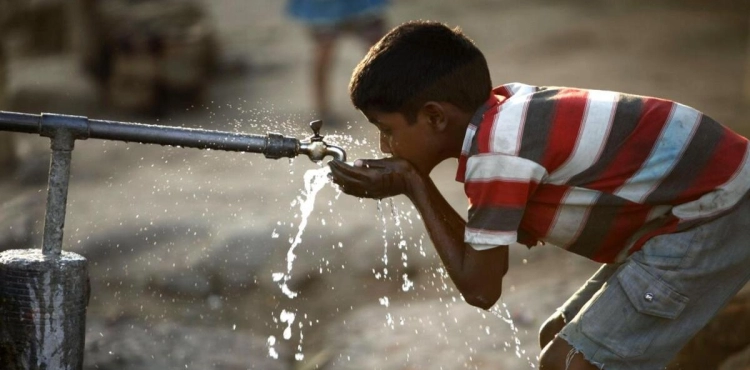Beneath an ancient tomb dating back to the thirteenth century in Fatimid Cairo, weeds grow in a muddy pond, to which water reaches from perforated pipes, from which quantities of drinking water leak out in a country suffering from drought.
Architect May Al-Abrashi says that these plants that grow at the shrine of Ashraf Khalil, which is distinguished by the texts of the Qur’an written in Arabic calligraphy on it, are not fed by “groundwater from the ground, but water directly under the surface of the earth.”
The engineer specialized in preserving heritage, along with her team, analyzed the stagnant water beneath the monuments in several places between the Khalifa and Imam Al-Shafi’i areas in Fatimid Cairo. And she explains that each time the results of the analysis were identical.. "It is drinking water mixed with sewage water."
"This means that there is a problem of leakage in the water networks" that feed more than 20 million people living in Cairo, the second largest capital in Africa.
The water reaches a depth of one meter under the mosques and shrines in Fatimid Cairo, where the level of the streets is higher than the level on which these ancient buildings were built.
According to official figures, 26.5% of the drinking water produced in Egypt did not reach the consumer during the fiscal year 2021/2022 in a country that suffers from water shortages and is threatened with “not having water in the year 2025,” according to the United Nations.
Experts believe that the percentage of drinking water lost is greater than that.
Hassan Tawfiq, an expert in water management, explains that "the production of the General Water Company does not match the volume of consumption registered with it," which means that there is a missing percentage.
And what experts call "unpaid water" leads to the loss of tens of billions of cubic meters of water worldwide.
Tawfik says that leakage in Egypt "occurs because the pipe networks are dilapidated and full of holes, and there is water theft" through random sub-pipes that are connected to the public network.
The water and sanitation company refuses to make any comment.
In large cities such as Cairo, where the drinking water loss rate is 23.5%, the water collects under the surface of the earth, according to Al-Abrashi, who confirms that the leakage occurs in the sub-pipes inside the neighborhoods, not the main pipes that are regularly detected and have no leaks.
The situation is worse in the Suez and Port Said regions on the Suez Canal in the east, as the volume of losses reaches two-thirds of production, according to official figures.
Tawfiq believes that this waste is unacceptable in a country that is going through the worst economic crisis in its history.
The researcher at the Dutch University of Wagentingen adds that Egypt does not have surplus funds to “afford the cost of producing water that no one uses,” and that every drop of water has a value in a country where the per capita share of water is 550 cubic meters annually, which is twice less than the minimum water safety limit. .
Tawfik stresses that repairing the sub-networks that deliver water to homes, hospitals and other infrastructure "could cost billions."
May Al-Abrashi believes that the cost of repairing the pipes can be reduced if the leakage sites are accurately identified. However, this requires that municipalities review their traditional way of working.
She added, "Currently, in archaeological areas, municipalities are setting up systems to divert water into the sewage network before it reaches the historical buildings, so that they are not affected by the increase in soil moisture and salinity."
"This is a vicious circle, so we proposed an alternative solution, which is diverting the water and using it elsewhere," she says.
In the other place, she means the other side of the street in front of the Dome of Al-Ashraf Khalil, where there is a garden of three thousand square meters, "which is completely irrigated from the water that is diverted from under the roof of this historic building and another nearby archaeological shrine known as the Dome of Fatima Khatoun," according to Al-Abrashi, who confirms that there is no This water can, of course, be used to grow food products due to the risk of contamination.












